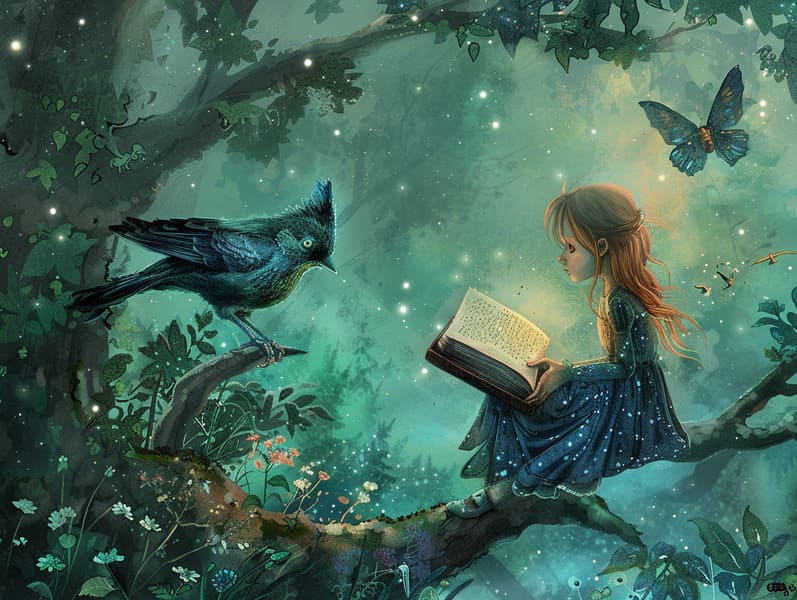A Brief History of Classic Fairy Tales and Their Timeless Splendor.
A Brief History of Classic Fairy Tales and Their Timeless Splendor.
Blog Article

Short fairy tales have deep roots. These narratives have been conveyed from one generation to the next long before they were ever documented. They came from a variety of cultures, including European traditions. They were initially narrated among older generations, often carrying themes and messages pertaining to the societal norms and beliefs of the time.
The famous Grimm duo, the two Grimm brothers, were among the first to gather many of these beloved fairy tales. Their collection, "Grimm's Fables," included tales like "The Little Glass Slipper," "Hansel and Grethel," and "Little Snow White," which have since become mainstays in the world of timeless fairy tales. Similarly, H. C. Andersen's charming fairy tales, such as "The Mermaid," and "The Duckling that Could," have gained the love worldwide, guaranteeing their place in the pantheon of beloved fairy tales.
Despite their ancient origins, these tales remain as relevant as ever, especially as kids' bedtime tales. These delightful tales are now available in various formats, including colorful picture books, magical animations, and free fairy tales online.
Their persistent charm can be ascribed to several delightful features:
Vital Lessons: Ancient fairy tales often present important moral lessons. Fairy tales like "The Tale of the Boy Who Cried Wolf" teach the importance of truth, while "The Hare and the Tortoise" highlight the virtues of persistence and unpretentiousness. These stories offer young ones clear distinctions between right and wrong, shaping their moral compass in a mild yet important way.
Compassion and Knowledge: Fairy tales frequently illustrate beings facing struggles and tests, fostering young readers to connect with their struggles and encourage their triumphs. For instance, "Beauty and Her Beast" shows us the virtue of valuing inner qualities to acknowledge the true nature of a soul, developing empathy and knowledge.
Cultural Understanding: Many traditional fairy tales are interwoven with the cultural contexts from which they emerged. Exploring these tales can provide intriguing perspectives into different social structures, developing a sense of world respect and discernment.
Creativity and Imagination: The extraordinary elements in fairy tales—enchanted forests—activate children’s creative dreams. These stories take readers to magical realms, enhancing fantastical thinking and a sense of astonishment that continues a lifetime.
Timeless fairy tales are not only bewitching but also instructive. They work as charming tools in cultivating various thinking and feeling skills in young ones. When classic fairy tales are voiced, they foster speech development by presenting new terms and meanings and complex sentence structures. This practice also promotes hearing perception and concentration, as little ones track the narrative, anxious to see what happens next.
Furthermore, examining the themes and characters of old fairy tales can promote reasoning skills and critical thinking. Young ones are guided to see patterns, guess what will happen, and realize cause and effect. These analyses also advance young readers convey their thoughts and feelings, enhancing their emotional intelligence.
In today’s digital age, the prevalence of online fairy tales has made these tales more accessible than ever. Online platforms and web apps offer extensive collections of children's fairy tales that can be viewed or listened via anytime, anywhere. Fairy tales voiced are particularly widespread, offering an fascinating method for young ones to relish these alluring stories. Read-aloud books and read-out-loud stories bring characters and settings to life, often accompanied by captivating melodies and harmonies that intensify the tale journey.
The enduring charm of traditional fairy tales lies in their ability to change to the present while maintaining their core messages. Contemporary renditions of these narratives often integrate more varied protagonists and modern settings, making them meaningful to today’s audience. However, the central morals of bravery, goodness, and truth remain unchanged, continuing to connect with young listeners of all ages.
Old fairy tales also offer a sense of ease and comprehensibility. They highlight a ordered narrative with a apparent beginning, middle, and end, often winding up with the settlement of conflicts and the triumph of rightness over wrongness. This certainty can be calming for children, yielding a sense of dependability in an shifting world.
Timeless fairy tales continue to enchant and instruct new generations, maintaining their attraction and applicability in modern society. As bedtime stories for kids, they feature a perfect blend of charm and enlightenment, nurturing moral values, empathy, and creativity. The proliferation of free fairy tales online and the in demand status of fairy tales recited warrant that these ancient narratives remain available to new generations.
By continuing and divulging these tales, we continue to value the rich tapestry of fantasy and cultural heritage. Whether you are experiencing a artistically illustrated check here book, accessing a cyber collection, or listening through an spoken story, the radiance of bedtime fairy tales is always within reach. These fairy tales demonstrate of the eternal ability of storytelling and its ability to tie us across centuries and lands.
If you are browsing a vibrantly illustrated book, enjoying a virtual collection, or playing an audio story, the mystique of classic fairy tales is always within reach.
These narratives teach us of the unceasing presence of stories and its ability to bind us across time and space, creating a bond that enchants and educates alike.